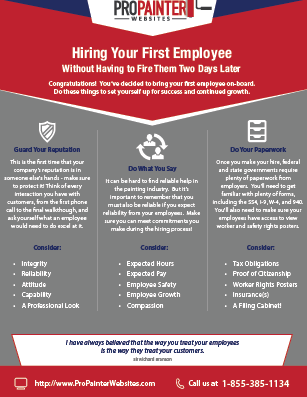Figure Out Just How Seasonal Aspects Affect Industrial Outside Paint Success And Uncover The Very Best Times To Ensure Long-Term Outcomes For Your Job
Figure Out Just How Seasonal Aspects Affect Industrial Outside Paint Success And Uncover The Very Best Times To Ensure Long-Term Outcomes For Your Job
Blog Article
Web Content By-Burnham Rosendal
When you're preparing an industrial outside paint job, seasonal elements can make or break your results. You'll wish to take into consideration just how temperature level and moisture effect paint application and drying out times. Selecting the ideal period can ensure your paint sticks appropriately and lasts longer. But which seasons are really the best for this sort of job? Let's explore the key elements that can affect your job's success.
The Impact of Temperature Level on Paint Application
When you're intending a business outside painting job, the temperature can dramatically affect exactly how well the paint sticks and dries.
Ideally, you intend to repaint when temperature levels vary between 50 ° F and 85 ° F. If it's too cool, the paint might not cure effectively, bring about concerns like peeling or breaking.
On the other side, if it's also warm, the paint can dry out also swiftly, preventing appropriate bond and leading to an uneven coating.
You need to likewise take into consideration the moment of day; early morning or late afternoon provides cooler temperature levels, which can be much more desirable.
Constantly check the supplier's suggestions for the particular paint you're making use of, as they commonly offer guidance on the ideal temperature array for ideal results.
Moisture and Its Result on Drying Times
Temperature level isn't the only environmental factor that influences your commercial external painting project; moisture plays a considerable function as well. High humidity degrees can reduce drying out times substantially, impacting the overall quality of your paint work.
When the air is saturated with dampness, the paint takes longer to heal, which can lead to issues like poor attachment and a higher risk of mold growth. If you're repainting on a specifically humid day, be prepared for extended delay times between coats.
It's essential to keep an eye on regional weather conditions and strategy accordingly. Ideally, aim for moisture levels between 40% and 70% for ideal drying.
Maintaining these consider mind guarantees your project remains on track and supplies a long lasting finish.
Best Seasons for Commercial Outside Paint Projects
What's the best time of year for your commercial external paint jobs?
Springtime and early autumn are typically your best bets. During these periods, temperatures are light, and moisture degrees are usually lower, producing suitable problems for paint application and drying out.
Stay clear of summertime's intense heat, which can cause paint to dry too quickly, leading to bad attachment and coating. Likewise, winter season's chilly temperature levels can impede proper drying out and curing, risking the durability of your paint work.
Go for https://interior-home-painters-ne02107.ja-blog.com/34410893/discover-a-cosmos-of-colorful-potential-as-we-share-the-key-to-improving-your-home-with-the-assistance-of-proficient-residence-painters with temperature levels between 50 ° F and 85 ° F for optimum results. Remember to inspect Read Home Page for rainfall, as damp problems can destroy your task.
residential painting around these factors guarantees your painting job runs smoothly and lasts longer.
Final thought
Finally, intending your industrial external paint jobs around seasonal considerations can make a considerable difference in the end result. By scheduling work throughout the excellent temperature levels and humidity degrees, you'll make certain far better adhesion and drying out times. Remember to keep an eye on neighborhood weather prediction and pick the right time of year-- springtime and very early autumn are your best choices. Taking these actions will certainly assist you accomplish a sturdy and expert surface that lasts.
